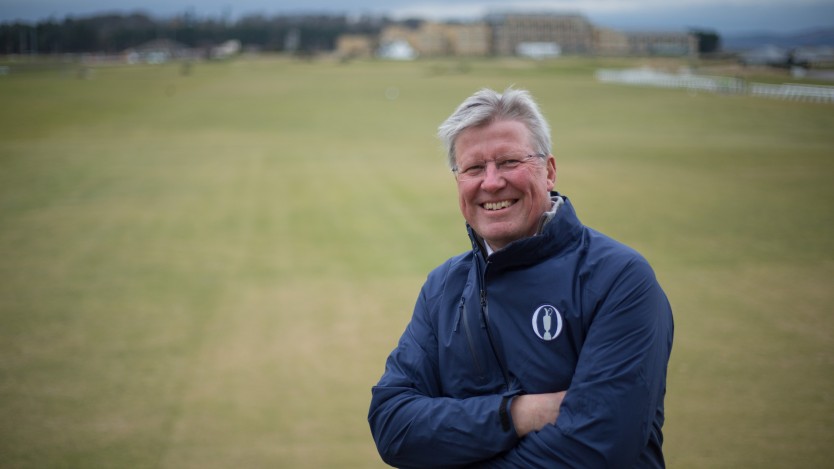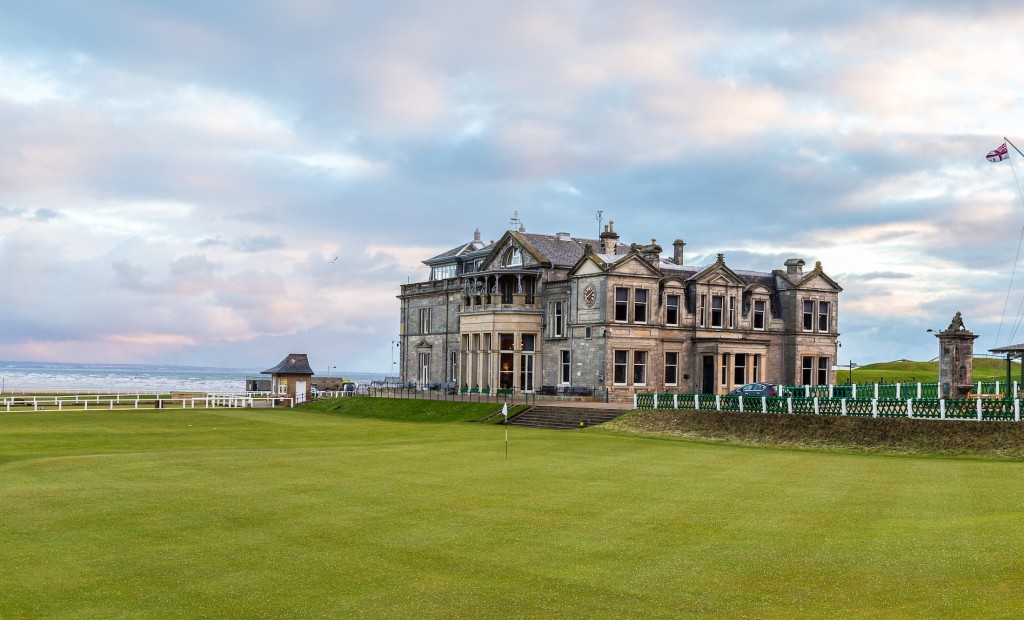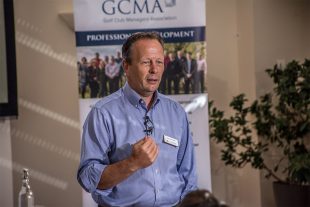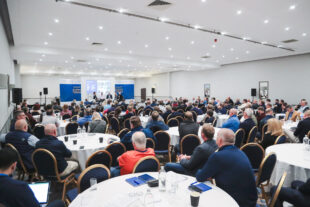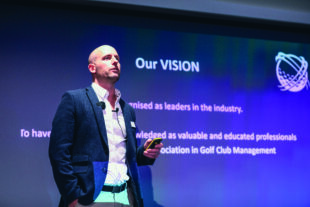As chief executive of The R&A, Martin Slumbers leads an organisation at the heart of the game. But, as secretary of The Royal and Ancient Golf Club of St Andrews, he’s also a club manager – and a member of the GCMA. GCMA communications manager Mike Hyde sat down with him.
What is your background in club golf?
Most of my background is as a member and a player. I learned to play the game when I was 10 or 11. I have to admit club golf was not that welcoming to young people in those days. I’ve played club golf most of my life. Some of my best memories are playing scratch golf for clubs.
I spent some time in committee work over the years but essentially my career took over most of my early life. I am a big fan of club golf and I do fear people who play the game but don’t belong to a club are missing out on some real great benefits.
I learned to play in Brighton at a club called West Hove, when I was very young, and I used to caddie there as a better way of earning pocket money than cleaning cars of delivering post. I played a lot of my golf in West Sussex. I was at West Sussex GC for many years and my current home club is still Worplesdon in Surrey. Clearly I play quite a bit up here in St Andrews.
How important is the role of the golf club manager in the delivery of golf in the UK?
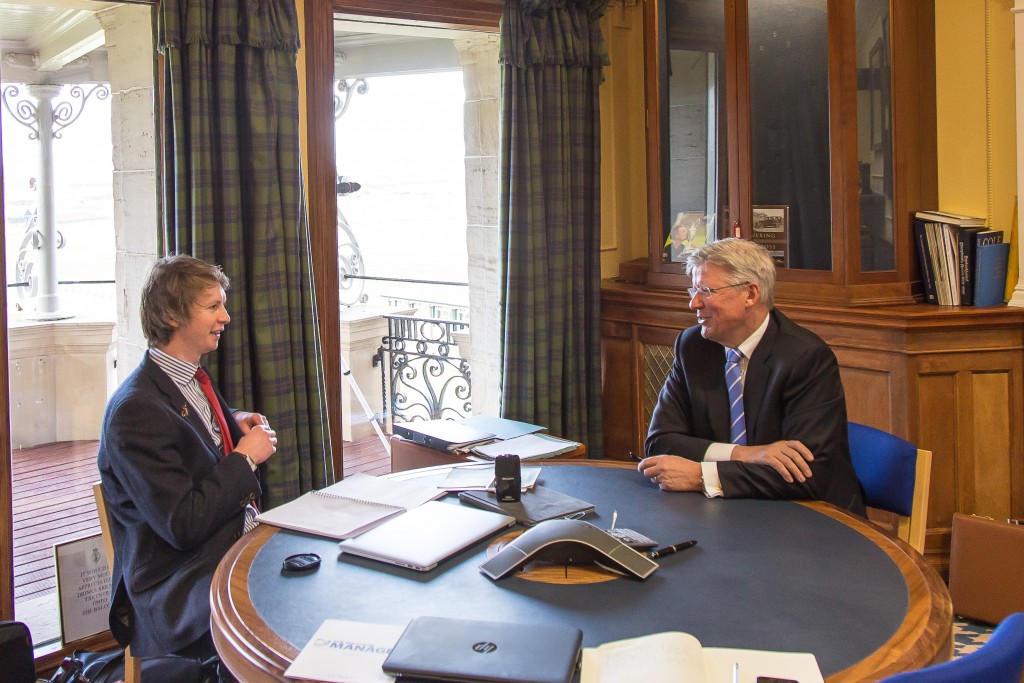 I think it’s absolutely critical and I think the role has changed dramatically since when I started playing – and maybe in the last 20 years. There is no doubt that, as the business has grown, the golf club manager to me is first and foremost a business person. It is a business and it is a business about attracting members, visitors and delivering services to those people.
I think it’s absolutely critical and I think the role has changed dramatically since when I started playing – and maybe in the last 20 years. There is no doubt that, as the business has grown, the golf club manager to me is first and foremost a business person. It is a business and it is a business about attracting members, visitors and delivering services to those people.
I find it very interesting how the clubs who are doing well tend to have managers who think about it like a business, have plans about how to develop their business and, quite often, have been through one of the management programmes. I think that’s a good lesson for all of us.
You published the Pace of Play manual last year. What has the feedback been and have you seen an impact?
There’s been very good feedback around the world. The manual came out of a sense of the
next stage we needed to get involved in pace of play. We called it ‘Time for Golf’ as much as Pace of Play. You can play 9 holes in a shorter period of time, that doesn’t necessarily mean you have played at a faster pace. We undertook a survey, where we had 56,000 replies, and the feedback we got in many ways reinforced what we all believed and had heard of – pace was a critical issue for the game.
I must admit, wherever I go in the game around the world, whether it is at the professional or amateur level, pace of play comes up regularly.
We published this manual and we did it in three sections – very specifically in three sections. One was around how the course is set up, secondly around how the course is managed and thirdly around the player themselves. We gave advice and some thoughts about each of those three areas.
I do think it is time for us to stop talking about pace of play and start to do something about it. When I go round, there are some clubs I go to where pace of play isn’t an issue. Members play at a totally acceptable pace for them.
I have to admit, my own home club doesn’t have a pace of play problem. It plays pretty quickly and fits in and it has got a full membership. I think where golf club managers feel that there is a pace of play problem, I would strongly encourage them to look at the manual and figure out how to take steps from there to address it.
I think it’s an issue that we do really need to start to push on and take some real actions. For The R&A, we will be implementing Ready Golf in our amateur stroke play events in 2017, which is one of the key recommendations in the manual.
Let’s just talk about The Open Championship for a bit. In the third and fourth round at Royal Troon last year, the average time was 3 hours and 49 minutes – for the whole field. In the first and second round, it was somewhere around 4 hours 35 and 4 hours 40 minutes. They were getting on with it.
We take this issue very seriously and we are trying to do whatever we can in our own events to make it one of our priorities. We are big believers that one of the key steps to growing the game in the future is family golf.
We need more women in the game, more youngsters in the game and I think this is where the club managers can also work closely – those clubs that have a professional – with the teaching professionals to engage with them so that when they are teaching the youngsters they teach them habits that are around playing a little bit quicker.
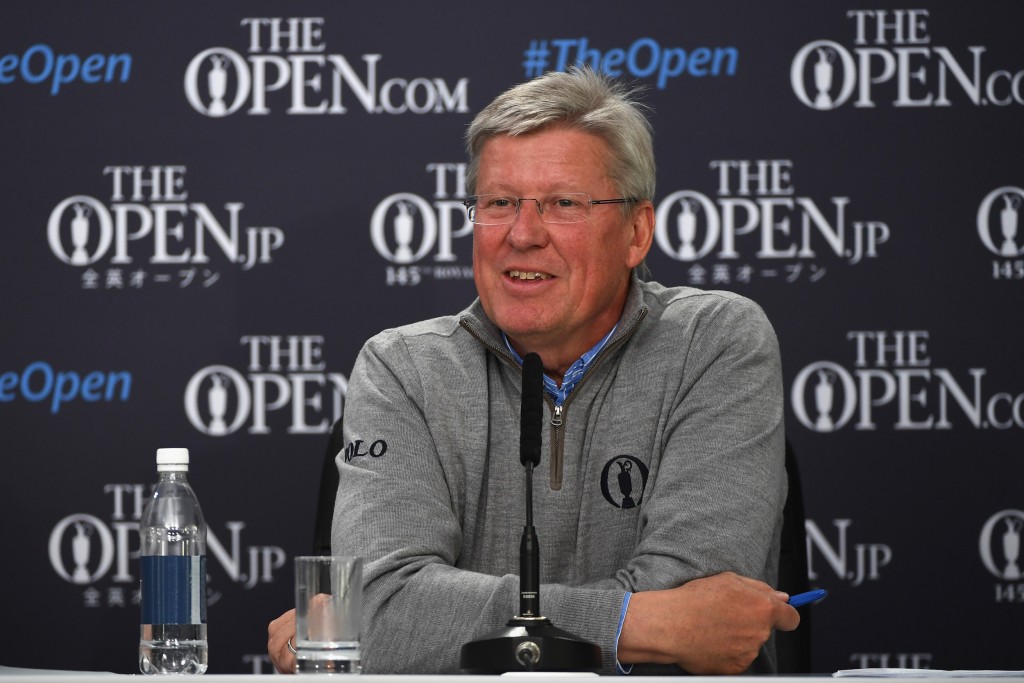 How difficult is it for clubs to enforce pace of play regulations when we are still regularly seeing five and six hour three ball rounds in the professional game?
How difficult is it for clubs to enforce pace of play regulations when we are still regularly seeing five and six hour three ball rounds in the professional game?
Pace of play is an issue for the whole game, whether it is the professional or amateur game.
I keep thinking about the topic in the terms that a lot of the conversation is about the professional game but 95 plus per cent of people who play this game do so for the love of it and play as amateurs.
The professionals are role models, and there is no doubt they are, in so many things. The way they approach playing the game, the way they prepare, the way they perform – I think they are fantastic role models for youngsters and not-so-youngsters to improve their own games.
They are role models but we need to really think in the amateur game about just getting on with it and not being too caught up in the pro game – which is essentially different in that they are playing for a living.
The golf we watch on TV bears increasingly less resemblance to the normal amateur game – driving distance especially. Can anything be done to align the two more closely?
Let me look at this slightly differently. I greatly enjoy professional golf at the top end. I love seeing sport played at the very highest level and it’s beyond what I can play. But that’s not a reason to bring them back down to my level. The vast majority of tennis players will never be able to stand there and serve the ball 100 plus miles an hour like Andy Murray does.
But does that mean they don’t enjoy watching Andy Murray play tennis? Absolutely not. Do we want the 100 metres to be slower? I think the top players are fantastic to watch. I can’t conceive of some of the shots they play. But, as someone who loves the game, I admire their skill.That’s how I think about it.
The R&A was quick to act when Muirfield voted against admitting women as members. But there are still a number of prominent clubs that are single sex. What’s The R&A view on those?
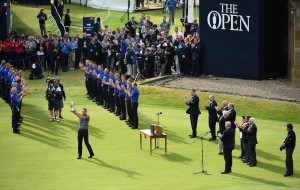 I think individual club membership is none of my business and none of our business. It’s a matter for the clubs themselves. However, when that club is then staging one of the world’s greatest championships, it does become our issue. That was the case with Muirfield.
I think individual club membership is none of my business and none of our business. It’s a matter for the clubs themselves. However, when that club is then staging one of the world’s greatest championships, it does become our issue. That was the case with Muirfield.
But individual policies for individual clubs are very much, in my opinion, their responsibility. It’s only when they touch onto the staging of public events that it becomes a different issue.
Is our handicapping system still too confusing for new golfers to understand?
I suppose there is an element of it that is confusing. I’ve played the game now for nigh on 40 years and seen various versions of the handicapping system. I have to admit I have always focused my own game on trying to reduce my handicap and I dread the time when age means that I am fighting it going back up.
I do think that it’s not so much the complexity. I think one of the bigger issues in handicapping is the consistency around the world. I personally, before I came here, used to find it frustrating that you could play in a tournament on the continent of Europe that wouldn’t count for your handicap here.
For us at The R&A, that is our priority – about trying to work with the USGA to see whether a world handicapping system can be implemented.
Similarly are the Rules of Golf too complicated? Are they a barrier?
No. I do not believe they are a barrier to people starting to play the game. I do think the rules have become complicated by virtue of the explosion of the professional game in the last 20 years. With our partners at the USGA, we have been working for four years on a new rule book, which is seeking to be more modern.
We don’t say simplified because it is not a simple game. We play it on a very large platform out there and the golf ball gets into some very unusual places and that needs to be thought of. But we are very focused on making the rules modern and more concise. We are now in a period of consultation. I would strongly encourage all of your members to get engaged with that consultation and I think it would be interesting and very powerful for them.
One message I think I would give to all clubs is: one of the great things about this game is that it does play to a set of rules. Those set of rules create many of the values of our game. I don’t know any other game in the world where you call a penalty on yourself and that, I think, is fundamental to golf and what makes golf different and, for me, one of the reasons why I still love it after 40 years of playing it.
I do think members can learn more about the rules. I would strongly encourage all club members to learn a little bit more. The R&A website has Q&As, quizzes, videos and an online Rules Academy and it’s good fun.
Understanding the rules should be part of every golfer’s desire to improve. But I don’t believe it is an impediment to people starting. The rules are designed to allow all of us to play on a level playing field.
The R&A has a global remit, and you travel all over the world. What are the most effective initiatives you have seen for growing the game?
A lot of them are around accessibility and affordability. The increasing number of public facilities is very important and, in areas where public facilities are available, you get more people wanting to learn how to play the game. In Asia, we are big supporters of the HSBC Junior Series which extends into primary schools.
We are involved in the Golf Foundation here in the UK and it is our single largest contribution to the game every year. It touches 500,000 children every year and it is very powerful. I think it’s a wonderful programme.
Then we go through to the Faldo Series: we are big supporters of that around the world – boys and girls golf, played competitively. Nick gives his time extremely generously to it. It has produced some wonderful players and it is now a global programme.
Over the last 10 years with our partners in America, we have developed the Asia-Pacific Amateur and Latin American Amateur championships – elite golf competitions played at the very highest level.That’s creating aspirations for young people who can play to develop their game and come and learn to compete on a world stage.
In those programmes around the world, you’ll hear from me a bias towards young people. I think the future is about getting more young people to play. It’s about getting more women to play. We were delighted to support Annika Sorenstam with her first Annika Invitational in Latin America last year. We will continue to do more of that because that, for me, is the future.
How does The R&A balance history and tradition with progression and innovation?
The R&A, the club, was formed in 1754. This clubhouse was built in 1854. It’s that history and that deep interconnection with how the game grew, not just in St Andrews but around the world, that gives The R&A real authenticity in what it does in golf.
It gives us a position at the top table of golf – to have an opinion on what is going on. The game has changed out of all recognition, certainly since I’ve been playing it with the growth of the professional sport. But The R&A’s consistently there and it is there because of our history and because of our authenticity.
That gives us the platform to very much think about: what do we need to do to be modern and relevant in today’s society?
We are always using those two words. In The Open, we’ve done a lot in the last few years around that space – with the policy of Under-16s getting in free to the accommodation village we launched for U18s last year at Troon, where if you bought a ticket your accommodation was free. That’s being extended this year to U25s.
From wi-fi throughout the golf course, to the 9-hole event that we launched last year at Troon and to our initiatives on pace of play, we are trying to use that position that has been built through history to create a modern and relevant society.
Who is Martin Slumbers?
The R&A’s Chief Executive and Secretary of The Royal and Ancient Golf Club of St Andrews, Martin took over the role from Peter Dawson in September 2015. He had spent 28 years working in investment banking and, most recently, was the Global Head of Business Services for Deutsche Bank AG.
Born in Brighton, and educated at Lancing College, he gained a BSc in Production Engineering and Economics from the University of Birmingham.
Starting as a chartered accountant with Price Waterhouse, in London, he became an investment banker and spent 12 years working for Salomon Brothers International in the City and Hong Kong – rising to Chief Financial Officer in Asia and Europe. He joined Deutsche Bank in 2006 and served in various senior roles. He is married with two sons.
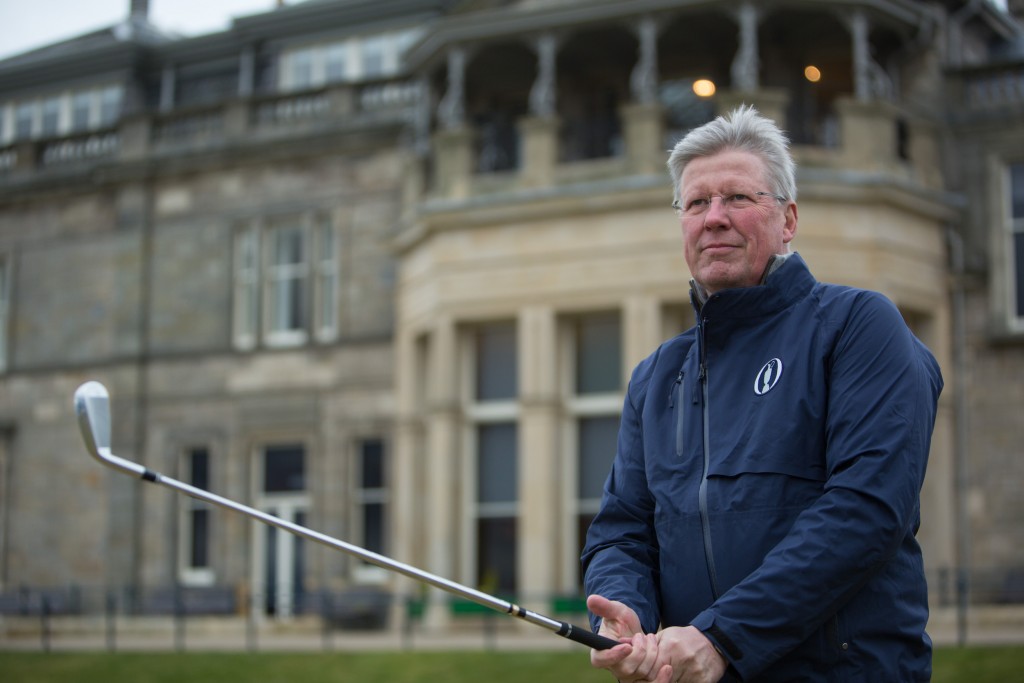
How do you see golf in 20 years’ time?
I’m really excited about golf. I think it’s a wonderful game. It has wonderful values. It has fantastic people who get involved in helping it grow. It’s a network of individuals who share a common love of a sport. The pro game has some wonderful players out there at the moment playing ever better. There are some wonderful amateurs out there playing and there are a lot of people out there enjoying it.
We do have to look at alternative ways the game can be played, particularly for younger people. Some of the initiatives we have talked about: like 9-hole golf. But there are more initiatives around – such as some of the pitch and putt competitions that are going on. That’s a great way of playing golf.
If you go out to Asia, it is some of the simulators that are being used to play golf when you are living in cities where there’s no grass. That’s golf to me. I think Top Golf has really taken off in the United States and I am really willing to embrace new forms of it because it creates more energy. If we do that, we have a wonderful game.
If you were appointed a club manager, what three things would be at the top of your first to do list?
At the heart of my experience is that I am a businessman. The first thing I would look at is: ‘is the business sustainable?’ I would look at it from the lens of accessibility and affordability. I would look at families and the ability to bring in more families. Are we welcoming? Are we giving facilities that families want?
I would be very much looking at the junior programmes because I think the future of clubs is about young people coming up and gaining the benefits of club life and, in time, taking over responsibility for running those clubs. I think that’s what I would first look at.
How have you developed your own managerial skills over your career?
That’s a really important point. Over my professional career, you see some people who don’t spend time developing their careers and their management skills. Generally, they don’t succeed. I have been very focused on looking at courses. I have been very focused on learning from other people.
It’s natural for me to ask a lot of people a lot of questions and learn. I think all managers, if they want to succeed over the long term, have to invest in themselves and have to build networks with people doing similar jobs.
Learn. Don’t just talk to people who run other golf clubs. Talk to people who run tennis clubs, who run rugby clubs, other sports.
We can all learn and when you are open to learning, and then filtering what would work in your own situation, that’s when you develop as a manager.
What motivates you?
What drives me is making a difference. I am a terrible person if you want me to do something that’s the same as has been done for the last x years.
I like to make a difference. I am naturally a very competitive person. I’m not horribly competitive. I do, at the end of the day, realise there’s more important things in life. But I am a very competitive person. What drives me is making a change and doing it really, really well.
This interview was first published in The Golf Club Manager – the official journal of the GCMA. If you would like to receive the journal, either join the GCMA today, or subscribe to the magazine.
By Mike Hyde
